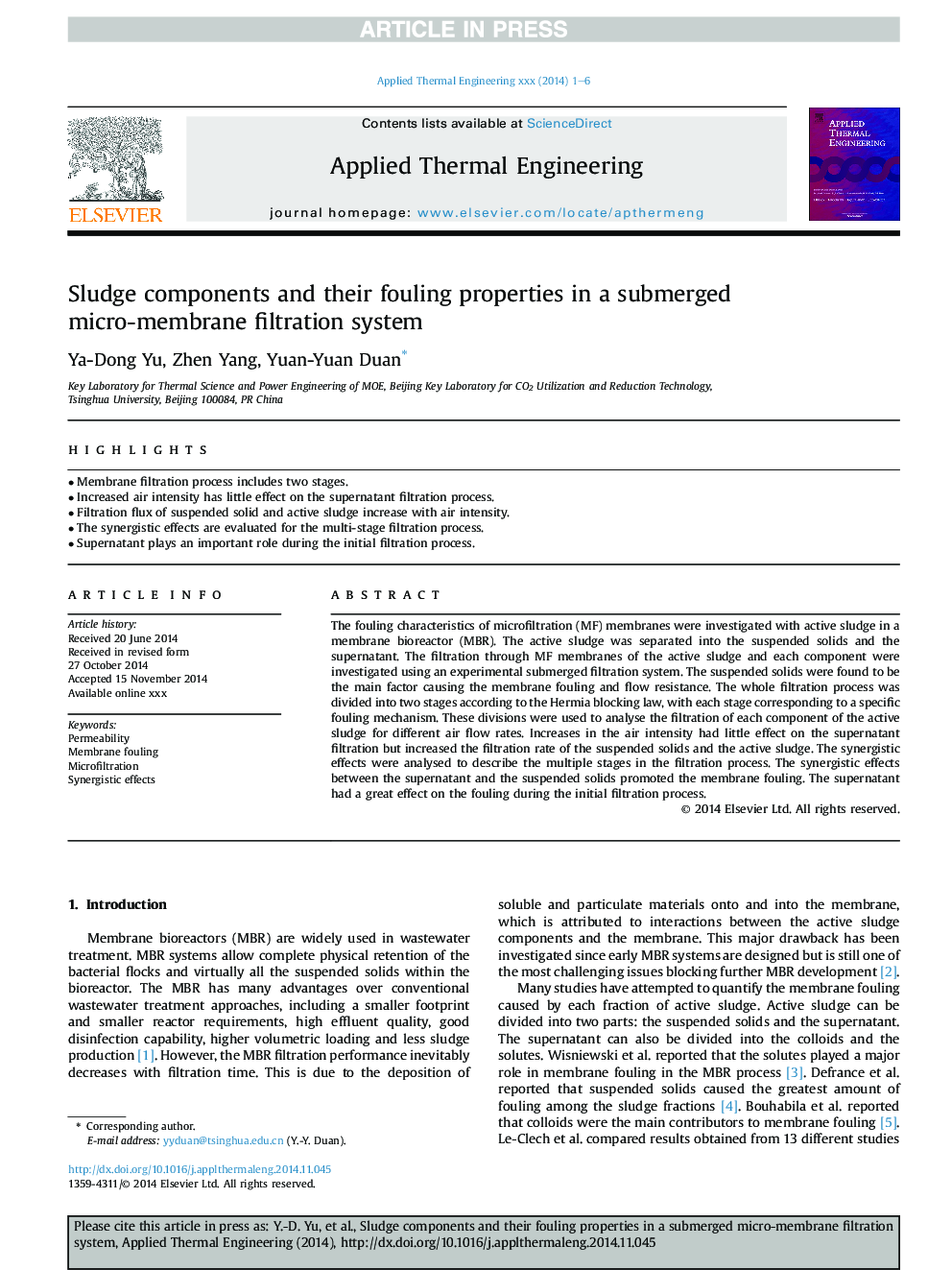| Article ID | Journal | Published Year | Pages | File Type |
|---|---|---|---|---|
| 645304 | Applied Thermal Engineering | 2015 | 6 Pages |
Abstract
The fouling characteristics of microfiltration (MF) membranes were investigated with active sludge in a membrane bioreactor (MBR). The active sludge was separated into the suspended solids and the supernatant. The filtration through MF membranes of the active sludge and each component were investigated using an experimental submerged filtration system. The suspended solids were found to be the main factor causing the membrane fouling and flow resistance. The whole filtration process was divided into two stages according to the Hermia blocking law, with each stage corresponding to a specific fouling mechanism. These divisions were used to analyse the filtration of each component of the active sludge for different air flow rates. Increases in the air intensity had little effect on the supernatant filtration but increased the filtration rate of the suspended solids and the active sludge. The synergistic effects were analysed to describe the multiple stages in the filtration process. The synergistic effects between the supernatant and the suspended solids promoted the membrane fouling. The supernatant had a great effect on the fouling during the initial filtration process.
Related Topics
Physical Sciences and Engineering
Chemical Engineering
Fluid Flow and Transfer Processes
Authors
Ya-Dong Yu, Zhen Yang, Yuan-Yuan Duan,
